
Scroll down for the ARTCRAFT link
Piano Music Rolls
'From the classics to ragtime, player piano music rolls to this day, continue to be readily available new or second hand, from many sources, in every country of the world. Such was, and is, the popularity of the medium'
A piano roll is the data used to control the player piano. A piano roll is a roll of paper with perforations (holes) punched in it. The position and length of the perforation determines which note is played and how long the note is sustained, on the piano. The roll moves over the 'tracker bar', which first had 58 holes, then 65 and later was standardised to 88 holes, one for each key. When a perforation passes over the hole, the note sounds.
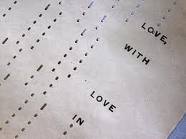
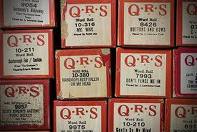
Piano rolls were in production commercially from 1896 to present and are still available, with QRS Music probably the largest still manufacturing, and many smaller concerns producing yearly limited output. The first paper rolls were used by Welte for use in their Orchestrions from 1883. Hundreds of companies produced piano rolls in differing size and perforation, in 1909 the American manufacturers of both rolls and player pianos agreed to a standard of 88 note rolls.
The player piano can be considered the first true computer, with data input via the roll, to perform a 'programed' function.

Arranged rolls are made using sheet music as a guide. The controls on the player for accenting, subduing and varying the roll speed must be used to avoid a lacklustre performance.
Hand played is a loose term for rolls supposedly made using a recording device that marks the paper as an artist plays, creating a 'master roll'. The master is then used as a guide for perforation of further rolls. As with other rolls, notes may be added and errors removed, by the arranger. This method was used as early as 1904 by the Welte company for their reproducing piano.
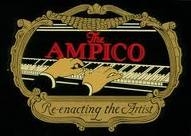
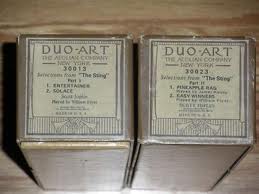

The Duo-Art, Ampico and Welte brands play 'reproducing' piano rolls, as they are intended to reproduce the touch and dynamics as well as the notes , when played back on same brand reproducing pianos.
There are literally thousands of titles, from Classical Beethoven to ABBA. Whatever your taste, there will be piano rolls to suit you. (maybe not heavy metal or punk....)
There have been hundreds of makers of piano rolls, mostly during the early years of last century. In Australia, the Mastertouch Roll Co, survived in Crystal Street Leichardt Sydney, until 2005. 80 to 90% of rolls in Australian collections are Mastertouch.
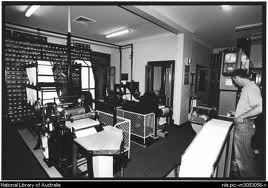
There are many sources of rolls; newly perforated, deceased estate auctions, eBay and other online auction sites, flea markets, secondhand stores and antique dealers. Some older rolls are damaged at either margin, due to poorly aligned tracking devices over many years. These rolls will become more fragile as each year passes, and care must be taken with their handling and storage to lengthen their life.
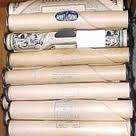
Fragile old rolls and New Stock
It is often said, that the days of the pneumatic player piano, or Pianola, if you please, are numbered due to the decomposition of 80-100 year old roll paper. Whilst this is true of some rolls, it is certainly not the rule. Many piano rolls from the teens and twenties are still very playable, and if needed may easily be repaired. Of course they will not last forever, so there is some merit in the fear that rolls will tire and disintegrate, and that does indeed happen over time and over some very dodgy tracker mechanisms. It is frustrating to have a fine old roll shred itself before your eyes, and usually before you can stop catastrophic damage. That said, thousands of rolls still exist from later decades of the 20th Century, and many are in perfect 'like new' order. These rolls are easily sourced from eBay, player interest groups and even by swapping with other collectors who may have double or more titles.
Even more interesting are the cottage and medium size business's who continue to arrange and perforate new rolls on brand new paper stock designed to last many decades of use. Hundreds of titles are still available, and this alone is good reason to be optimistic about the future of the pneumatic player piano.
Indeed it is a fact that many new rolls are of even higher quality than the early originals, that were mostly of high quality themselves. You can order titles from some companies and hobbyists, who will perforate a small run. You will likely be required to purchase the run of 5-10 rolls, but this investment is easily recouped by re-selling or swapping.
You may also readily purchase specially made roll boxes, labels, roll leaders (many closely resembling the originals with their artwork etc.) cardboard spools and roll flanges.
I have many ancient piano rolls in good to excellent condition, also some in a disastrous state ready for repair and many from closer decades that are as new, and some brand new rolls of excellent quality, and always priced reasonably. You will find a few superb present day arranger/ roll makers (scroll down) and in the Links section of this site.
I believe that the future of the pneumatic player piano (Pianola) is very secure.
P.B.
ROLL REPAIR
BEFORE
AFTER
This roll required repair as the left 'tracking' side was frayed. I did this by running archival tape along the edge (back) to strengthen it. Only run in 1" lengths and split the tape to avoid covering expression perforations. This method will add years of life to a damaged roll. Only use archival tape, it will not cause damage to the paper, long term.

ARTCRAFT MUSIC ROLLS
It is my pleasure to welcome the generous contribution of information to this site by L. Douglas Henderson, and present his ARTCRAFT Music Roll Company. Douglas needs no introduction, as he is one of the most eminent roll arrangers and producers in the world.
In addition to his prior many decades in the industry: ARTCRAFT is celebrating 30 years of quality music roll production in 2012
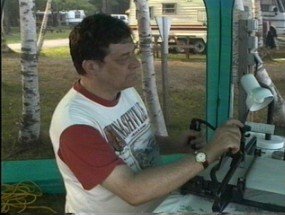
"ARTCRAFT Rolls That Convey Realism And Fine Technique"
Arranged by L. Douglas Henderson, (pictured above) Douglas lives and works in the picturesque village of Wiscasset Maine, his artistry in roll arranging, surpasses anything previously available, the Artcraft range of piano music rolls are unique. Nothing comes close to the life and exuberance that these rolls showcase. If you want the very best performances from your player piano:
The following material is drawn from ARTCRAFT Music Roll's site, and is reproduced here with the kind permission of Mr. L. Douglas Henderson:
INTERPRETIVE ARRANGEMENT
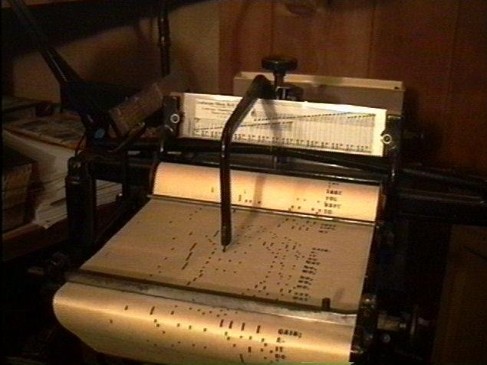
Above is a view of the Industrial Model #8-B, which has a 16-roll duplicating capacity via a special rack for the pre-trimmed paper. The Studio use of this 'Leabarjan' is not to copy rolls, but to RE-MASTER old arrangements by "reading" a perforated roll while "cutting" entirely different material with the punch directly behind the 'tracing' stylus. The #8-B has taken some drab rolls of the past and made sparkling NEW Masters, complete with augmented thematic material and varied striking effects. [See NEW 'CASTLE HOUSE' MEDLEY in the roll description department for details about this special kind of arranging activity:http://whttp://wiscasset.net/artcraft/rolls2
The key to the artistic success of ARTCRAFT Rolls lies in the combination of modern audio with vintage 'Leabarjan'™ perforators. Three 'Leabarjan' machines (2 Model #5 and 1 Model #8-B) are in the Studio, along with a variety of Tandberg and Marantz audio equipment, for the analysis of recorded music. Rolls in-progress can be heard immediately through "instant replay" on an electric "AR" or a pedal "O" Steinway-Aeolian player grand piano, only a few steps away. The use of multiple perforators also allows 'test strips' to be cut and these can be auditioned while the Master Roll remains in another 'Leabarjan'. The time scales are variable, just as with the note perforations, so this is a departure from the 1911-1927 design of the original equipment. An INTERPRETIVE ARRANGEMENT might have 7 punches per beat (instead of the traditional 6 or 8 used by the industry), or 11 or anything else which "fits" the musical effect desired. An important thing to remember is that EVERY roll produced by this ARTCRAFT process is a separate musical project — the rolls attempt to "fit the musical performance desired" instead of being "forced into a stock formula" established by a factory. The staccato is graduated, for example, and there are no limiting 'rules' for arranging techniques.
These pictures don't illustrate the superior sustaining pedal effects of ARTCRAFT rolls, but suffice to say they can be played in the company of an accomplished keyboard pianist. (Excessive sustaining pedal effects are perhaps the worst element of the original Ampico and Duo-Art releases). The modern INTERPRETIVE ARRANGEMENT approaches the pneumatic sustaining pedal as something "slower" and completely different from the pianist's use of the device, and — in doing so — achieves artistic heights in pedal shadings, heretofore unknown in the music roll field.
ARTCRAFT Rolls have shared the concert stage, here and abroad, with some of the finest pianists of our time. As one celebrated Gottschalk interpreter exclaimed during a program, after hearing an INTERPRETIVE ARRANGEMENT based on an analysis of his audio recordings, "That's me! Even the parts I can't play sound like me!"
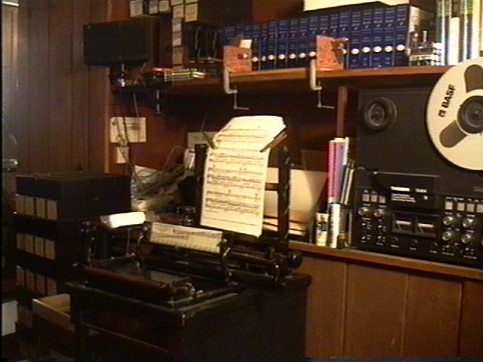
COMPARE THESE PERFORMANCES of "THE NAKED DANCE", 'Jelly Roll' Morton's brothel number!
HEAR JELLY ROLL MORTON play "The Naked Dance" on a rare 78 rpm record ... then listen to the ARTCRAFT Music Roll simulating his performance. (Note: Player rolls have variable tempo, so the ARTCRAFT Roll version is a bit slower, which I prefer, but it could be set for the same tempo as the phonograph record.)
a) Morton, live, playing - http://www.youtube.com/
http://wiscasset.net/artcraft/ldhqrs.html
b) An ARTCRAFT Interpretive Arrangement, arranged/perforated by L. Douglas Henderson -
http://techtv.mit.edu/videos/
The "played by Jelly Roll Morton" rolls were fakes made by Mary Allison, working from copies of Melrose sheet music.
c) http://www.youtube.com/
Let's all bury the MYTH of "Hand Played" music rolls! Follow the link below:
ARTISTYLE Rolls for the Angelus players
The overlooked and highly creative roll annotation system by Wilcox & White of Meriden, CT- and in the U.K., usually connected with Marshall & Rose pianos
Wilcox & White Co. - a family business, operating differently from Aeolian and other corporations in the field.
While Aeolian –– across the street in Meriden –– was supposedly a competitor, this was not entirely true. Aeolian's Universal Music Rolls Co. supplied the W&W rolls and duplicated their 'hand played' and 'reproducing roll' Masters, from 1916-1921 and then with Theo. Brown (Simplex) taking over the piano manufacturing, Aeolian continued to make rolls until 1926. At that point, QRS took over the program. I was a friend of Russell White and several members of the family; he said that he and Percival van Yorx, the arrangers for the company, continued to make Master rolls until the switch from Aeolian to QRS. The companies were not the rivals as others often proclaim them to be, and they both shared the "solo" patents in the States, called the Themodist by Aeolian and the Melodant by Angelus.
The ad above gives an indication of the earlier market for the Angelus piano-players. They began with the Pneumatic Symphony 44-Note reed organ which in the opinion of this writer had a superior tone to the Aeolian 1500 organ, of slightly later vintage, using 46-Note rolls. (So popular were the latter instruments that the company's name was changed from the Mechanical Orguinette Co. to Aeolian.) Rolls for both player reed organ lines were made by the Aeolian-connected interests, including the time before its name change in the mid 1890s.
The Orchestral Angelus 58-Note piano-player, shown above, was an outgrowth of the Wilcox & White organ business. It was constructed like an organ and featured 2 ranks of reeds (violin and flute) plus swells and a stop marked Piano. I have played a number of them as an organ only since the reeds were tuned to A-435 (or thereabouts) and not A-440, the piano tuning standard of our time. It would have meant "detuning" a piano in our museum during its run of 23 years, so the Piano + Organ feature was never used. I did have on rare occasional several opportunities to play the Angelus Orchestral Piano which had one bank of reeds in the piano, so can imagine the effects that this early piano-player produced. [The quantity of reeds was not standardized in this family business, so on special order many more reeds were incorporated into their player organs and Angelus piano-players.]
Wilcox & White organ rolls along with their Angelus player piano rolls in the 58 and 65-Note formats were all designed to run in the opposite direction from Aeolian and the other makes. The dynamic imprinting is UNDER the curvature of the paper for what was calledPOSITIVE TRACKING in the old days, an idea which went back to hand crank orguinettes –– usually with a scale of 20 notes or less. While there is less paper to view in the spoolbox, above and below the tracker bar, the paper is always "TIGHT," as it opens the holes for the playing notes ... so there was a valid reason for this approach. I have never found it difficult, but then if one knows the arrangement, through a little advance practice, it's not necessary to view a larger display. POSITIVE TRACKING also produced few discords when playing.
If you examine where the major dealers for the Angelus players were, you will find –– taking California as an example –– that Sherman & Clay with Aeolian were in the larger cities and coastal areas, while the inland communities, such as Stockton, had the Wiley B. Allen Co., a major retailer of Angelus instruments. The advertising reflects this emphasis also. While Aeolian had the urban, "arty" and rich person aura in their ads, plus endorsements from musicians who annotated their rolls, Angelus emphasized the "home parlour atmosphere" and had supportive visuals in their ads accordingly. The focus on the Angelus was on YOU, the owner. Aeolian pushed 'experts', especially composers, who were going to guide the customer through the interpretations, all laid out from sheet music in those days. Angelus empowered the customer. Aeolian dominated from a lofty sphere and specialized in name dropping at every opportunity. Thus, competitors that the two companies might have been, they didn't rub elbows that much in the music roll field in spite of what some revisionists often say.
Now, although I have said that Wilcox & White avoided name dropping, it was used occasionally in their advertising. Here are two examples of endorsements from the years of 58 and 65-Note rolls; many instruments were playing both formats with different paper widths at that time:
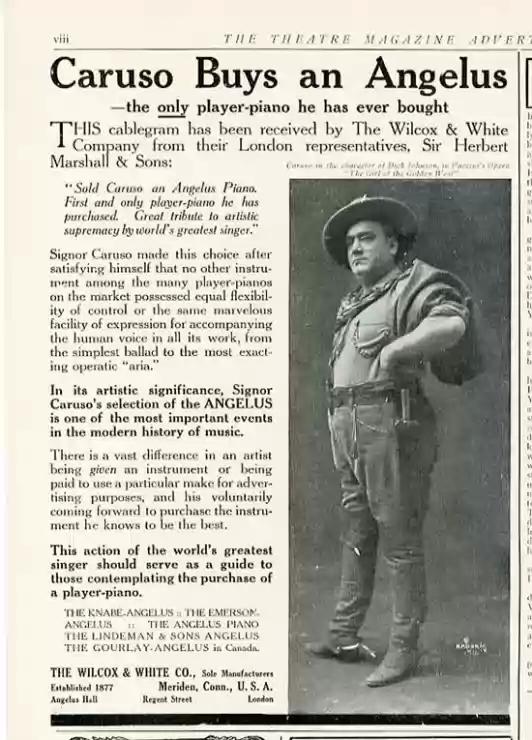
–– and this early Angelus display advertisement . . . (plus note the reference to other artists being PAID TO ENDORSE players, a definite slam against Aeolian as well as the Simplex, which had Adelina Patti posing with their spring-operated 65-Note piano-players.)
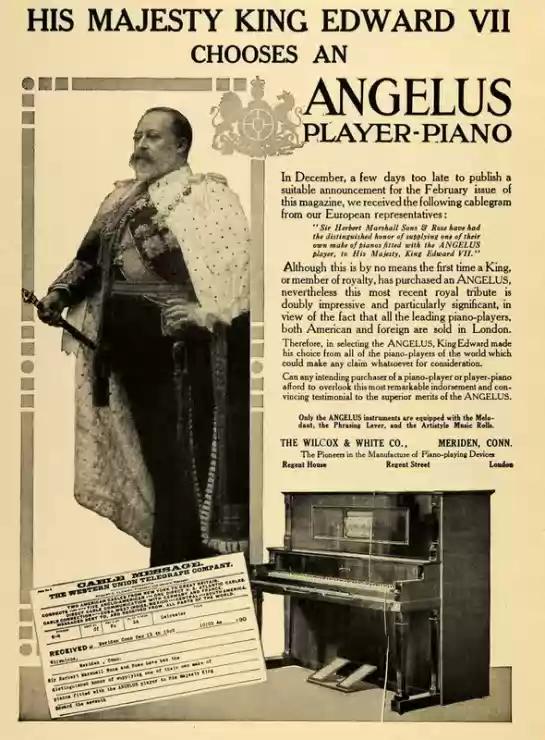
The Artistyle Rolls: 65-Note then 88-Note releases
–– but the company never fully recovered from the switch away from 65-Note rolls
One of two limiting factors of Wilcox & White was that it was a) a family business more than a 'holding company' corporation and b) they began with player reed organs and never stopped using "organ technology" in their player piano action designs. Beyond that they owned no piano company so had to purchase instruments and fit them with the Angelus players. The Knabe Angelus was one of the first players using a deluxe instrument (going back to the 65-Note days). However, as the piano companies began to combine into corporate entities, they found themselves without a steady supply of known pianos with which to associate the Angelus actions. The American Piano Co. took away Wm. Knabe and Chickering. Aeolian monopolized Steinway, plus owned Weber and Geo. Steck. Kohler and Campbell – the Autopiano and later Welte-Mignon Licensee/Deluxe people – absorbed one company after another and "raided" many of the finer Boston area brands, using them for Standard Pneumatic Actions, later installed in over 110 makes of pianos. Finally, Wilcox & White bought their rolls from Aeolian right there in Meriden, CT, so availability often led to requesting a "2nd or 3rd choice" when ordering titles. Shortly before their bankruptcy in 1921, Wilcox & White bought a couple of lesser known piano companies, but they never had the stature and aura of say, "a Knabe Angelus player".
While the pseudo-scientific Metrostyle line by Aeolian had been launched earlier, the Artistyle 'competition' began in the 65-Note era as well, featuring Aeolian rolls respooled and with the printing on the reverse side for 65s and conventional tracker bar layout for the 88-Note releases.
What makes the Artistyle so appealing is that it EMPOWERS THE ROLL INTERPRETER rather than assaulting the senses with a wavy red line that is partly for accenting and partly for phrasing purposes. Instead of some grandiose name of a musician to justify the line, the Artistyle merely combined dynamics with tempo phrasing, using their combination levers: one for the basic tempo and the other a 'tablet' called THE PHRASING LEVER for Accelerate/Ritard/Pause. This device connected to the wind (air) motor governor directly, giving one the "feel" of the instrument, hence their expression, which was "The Phrasing Lever is The Heart of the Angelus." Note, other players often featured an Accel./Rit. lever or buttons which did roughly the same thing, but the Artistyle was primarily aimed at use with the tablet control of the Angelus instrument.
Let's begin by analyzing a typical Artistyle annotated music roll:
We wish to thank advanced collector Michael Potash for supplying these Artistyle pictures, shown in his Franklin Marque Ampico (pedal Ampico) spoolbox.
Here on the leader of an Artistyle roll is the stamp for tempo instructions – where R, A and T (standard tempo) were the key indicators for the use of the Phrasing Lever (tablet). One merely followed the usual dynamic line but influenced the roll speed with these markings.
Here we see the dynamic spectrum for pedaling, a layout which follows most 65-Note and 88-Note music rolls. The difference here is that A, T, R and a few other details replace the series of "spots" or lines on conventional rolls for the volume to be achieved. NOTE: The roll begins with "T," the regular speed set by the tempo indicator at this point.
Standard tempo continues here but LOUD at first and SOFTER as indicated.
The roll is running at the middle volume (MF) and you can see where the standard tempo ("T") changes to Accelerate ("A"). At this point the musician presses down on the Phrasing Lever to speed up the roll at his/her own discretion.
The crescendo and diminuendo (loud/soft) dynamics are in the placement of the letters. The musician ritards ("R") the roll and eventually stops it entirely with the "fermata" stamp.
After the "fermata" (distinct pause) the roll continues in the middle dynamic range, but MELODANT ON indicates that the 'solo' switch is to be engaged. The Melodant separated specific notes from the rest of the arrangement for defined accenting, similar to Aeolian's Themodist and Hupfeld's Solodant in its musical operation. [The double-perforation theme holes were the same on all types of their 88-Note rolls as well.]
Finally, here is how the Artistyle feature in combination with the Phrasing Lever was marketed:
What is overlooked here, when comparing the Metrostyle to the Artistyle is that the individual must sense or gauge the tone of the piano being played. The Artistyle let the user decide how much to speed up or slow down the roll within the framework of familiar dynamic suggestions. This is a different approach from the lofty red line which, due to roll tracking, takeup spool sizes and a host of other transport variables was a "scientific looking" approach which had little or no authenticity. The Angelus, with the owner in charge, would let individual's taste reign as the indicators traveled past the tracker bar. No questionable artist signature logotype was needed!
I knew some of the members of the White family, specifically Russell H. White, who with van Yorx did most of the arranging and annotating activities at the Meriden plant. Once Conway/Simplex had moved the operation to Mass., they continued adapting the "reproducing" rolls for their electric players until 1926. These were often Duo-Art arrangements renamed Mel-O-Dee or Welte-Mignon rolls and remastered for the Angelus expression player. The personal control aspect began to disappear after QRS took over the roll business at that point, while the pianos/actions were built with Simplex designs until the early 1930s.
Barbara White, Editor of the Meriden CT newspaper, arranged for 2 bus trips of former employees to see our museum. Many told of special factory rolls, used to test the voicing and operation of specific pianos, such as the Wm. Knabe of Baltimore MD. Another member of the White family was a reporter and did a photo essay for a Maine newspaper, years later, by visiting the ARTCRAFT Studio, following the museum partnership breakup in 1986. There was definitely a "family atmosphere" to the people associated with the Angelus players, quite different from my experiences with former factory workers in other facets of the player industry.
If you do not have an Angelus, with a little practice you can run the roll at a "T" (standard) tempo and then perform the "R" and "A" activities yourself. It doesn't take long to acquire a "feel" for the original position of the tempo lever as you interpret their arranged music rolls.
All told, the Artistyle is, in this writer's viewpoint, a far more satisfactory method of controlling music roll speeds, since it also incorporates the traditional dynamic line at the same time.
Wiscasset, Maine 04578 USA
5-14-2012
The future of Player-Piano and 'Reproducing' Rolls
Interaction with the music rolls, manually and visually, is where the SUSTAINED INTEREST lies. The perforated roll is an educator, a fascinating performer (when 'guided' or 'monitored' by an involved human being) and above all, a PERMANENT arrangement for the future. The Pianola and its 'Reproducing' kin will still be playing somewhere in the world, long after the solenoid players of today have been trucked to the landfills. A few 'Reproducing' pianos are being made in our time, as a craft industry ... testimony to the longevity of the instrument.
When the new Century arrives, the INTERPRETIVE ARRANGEMENT will be the only viable style of roll to compete with audio recordings and live performances ... on its own terms and not as a "weak sister" pianist-imitation as it has been so often in the past.
The 'rec room' player is just about dead, and deservedly so. The 'arty' UNATTENDED 'reproducing' player with its fraudulent rolls pretending to be artists' performances is heading for the horizon as well. What remains are restored and well-regulated pneumatic players, which, when equipped with a library of INTERPRETIVE ARRANGEMENTS, will continue to excite and fascinate listeners today ... and in future decades as well.
L. Douglas Henderson - ARTCRAFT Music Rolls Wiscasset, ME 04578 USA [May 6, 1999]
NEW Releases from
ARTCRAFT Music Rolls!These are the 21st Century rolls from ARTCRAFT ... representing the finest arrangements ever released for your Player-Piano or expression 'Reproducing' Piano
Arranged and Interpreted for the Player-Piano by L. Douglas Henderson - $45.00
THE CARIOCA probably represents the most work ever lavished on a player roll, which began in 1986 in a modest way, but was shelved from time to time as Mr. Henderson studied the audio from a VHS tape of the famous RKO musical, which launched the careers of Fred Astaire and Ginger Rogers. (While they had minor roles, compared to the 'stars' of the day — Gene Raymond and Dolores Del Rio — this effervescent Brazilian number "stole the picture" ... and the dancing duo became box office attractions in their own right!)
If you have never seen this memorable RKO picture, our roll of THE CARIOCA stands on its own feet as a musical extravaganza of the highest order. However, if you know the visual elements of this long, long musical sequence, the roll — believe it or not! — conveys, through creative arranging, all the action on the motion picture screen.
The roll begins with simulations of a few native instruments, with Ginger Rogers making snide comments, such as "They call this quartet a 'band'?" Our roll of THE CARIOCA has rubber stamps for some of this breezy dialogue, along with thumbnail descriptions of the soundtrack/visuals.
Once the orchestral version of THE CARIOCA begins, the roll "takes off" and never lets the listener down, even for a moment. You hear "The Squeaky Photophone Girls" in the balcony ... Etta Motten giving her sultry vocal refrain ... the talented Negro tap dancers who seem to 'float above the dance floor' and all the exciting elements, including Fred & Ginger tap dancing on "7 fake revolving grand pianos" (with approximately 2 pianos in the Photophone soundrack!) ... plus a finale which has to be heard to be believed.
Each repetition of the music is a variation, a creation of its own ... and the music builds as it repeats itself. Not until you approach the later variations do the higher/lower notes of the piano scale come into play, retaining the element of surprise which the film possessed, in its own special way.
There was a tandem droning, boring, muted version of THE CARIOCA for Ampico and Duo-Art in 1933, a Duo-Art version which appears, here :

Note that this FAKE "Arden & Ohman" roll, a 'graph paper with pencils special' by Frank C. Milne looks like ORGAN MUSIC. On a piano, especially where staccato and sensual Latin rhythms are required — as in this infectious piece! — the last thing the listener wants is "connected notes and organlike playing" on a piano keyboard! (Note: at this writing, we have an "Arden & Ohman" style roll in progress, inspired by their Victor Record of 1930, and it sounds like them, being bouncy and sparkling in performance ... just like THE CARIOCA illustrated below.)
You don't need to hear the following roll of THE CARIOCA on a player or 'reproducing' piano to realize the difference that Interpretive Arranging makes.
Compare these staccato notes (graduated down to a 128th of a beat) with the lackluster perforations, shown above:
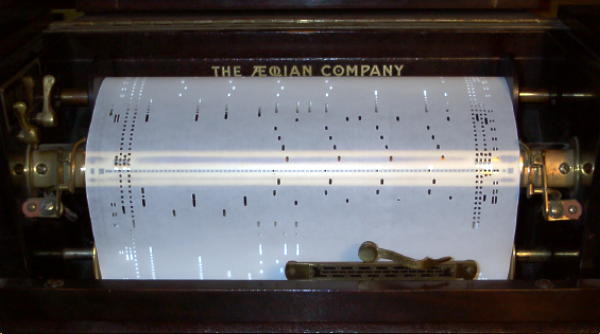
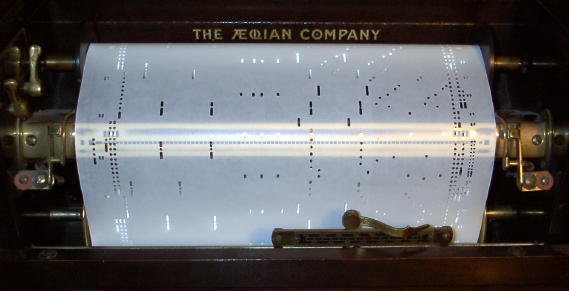
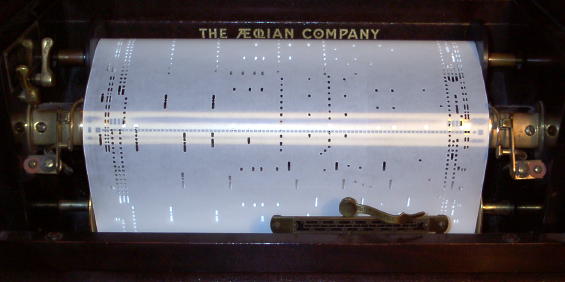
Telephone 207 882-7420 or 207 631-1761

The METROSTYLE -Artistic tool for roll interpretation ... or visual sales gimmick?
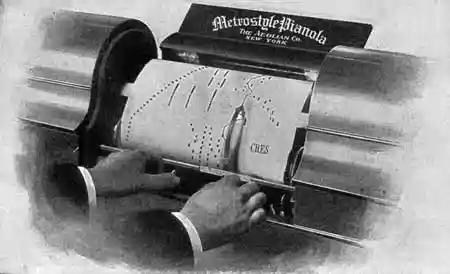
The invention of the Metrostyle was the brainchild of Francis L. Young of New York - who later became one of the highest paid employees of the Aeolian Co. and toured the world demonstrating the device through the medium of the 65-Note scale Pianolas attached to piano keyboards. While it appears to be simple, when examining a music roll with the line ... behind the scenes was a complex factory marking operation, first using a series of stylus pens with red ink and later in the States rubber stamped red lines. (The ink method gave blotches on occason, much like a defective ballpoint pen, while the templates for rubber stamped lines have little breaks every so often which is when the next template stamp for the line is to be continued.)
Below is a photograph from 1912, a little over a decade after the Young invention became an essential part of the upscale Aeolian players:
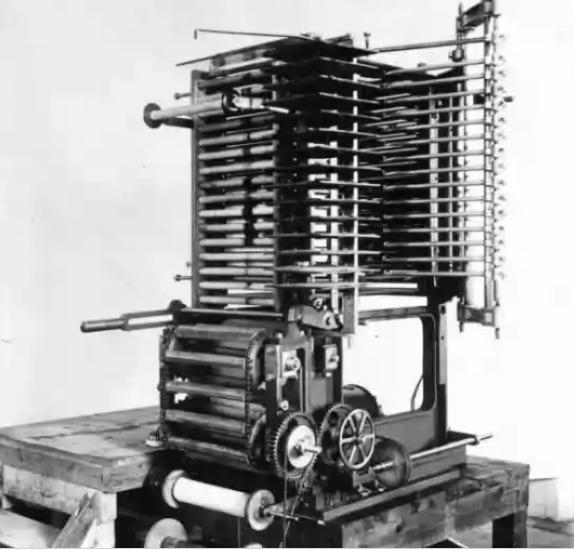
The elaborate and fanciful Aeolian advertising suggested that not only anonymous roll interpreters at their company were scoring the lines but had engaged famous composers and pianists to "Metrostyle their own interpretations" as well. These were called Autograph rolls, often Autograph-Themodist in the later years.
There is far more to running a pedal player than correcting for the tempo, introducing a fermata (major pause) or executing an extended musical phrase. The tempo lever is PART OF THE ACCENTING SYSTEM, used in combination with the foot pedals. A good Pianolist will accelerate the roll speed until the note to emphasize appears; this is done with the "lead foot". Then, the other pedal is used to take up slack at a lower vacuum while the tempo lever is moved swiftly back to compensate for the meter. The interplay of the tempo control and the pedal strokes are integral on all pedal players - save those with an electric motor roll drive, a spring operated transport and some rare pianosthat use the pedals for accenting while an electric motor unit powers the rest of the player action.
Thus, there was a conflict in the fancy lithographed ads for Pianolas with the Metrostyle ($50 extra for the feature, at first) and what the line is supposed to do. The 65-Note rolls, as shown in the advertising picture at the top of this page, were a natural for the Metrostyle "inked" rolls. They had large perforations and a faster travel over the tracker bar, allowing for the "pedal stroke" impulses to be marked along with the character of the music itself. The later 88-Note rolls, however, compressed this kind of information. It was during the 'Teens that Aeolian of NJ made the decision to eliminate all the finer details in the line - that is, for pedal effects in accenting via the tempo lever guide - and switch to the rubber templates, something they also used for stamping words on rolls. The Metro-Art 88-Note rolls had less wavy effects, due to the method of stamping over inking ... but also were introduced when the little known Electric Pianola was being introduced, the idea being that a "hand played" roll (which was arranged FROM some alleged keyboard playing) could be improved by superimposing the Metrostyle markings, but when left unattended would still present an acceptable texture for the music. These rolls had stamps on the leader called "The Value of The Metro-Art" and similar ones, with a short paragraph about how boring rolls become when played automatically and without human involvement.How true that statement was! (If one reads between the lines and knows about the clauses in the Aeolian-Steinway contract for 20 years beginning in 1910, this was aimed at the Welte-Mignon - often in a Steinway piano - which had practically no levers for hand control beyond tempo.) The Electric Pianola was short lived for soon Aeolian added"accordion pneumatics" to create the Duo-Art Pianola and some early grands with an electric vacuum pump were converted to the Duo-Art semi-automatic player, which involved pneumatics tugging on the expression valves through extra holes in the margins of special rolls. The Duo-Art allowed for both semi-automatic expression (with the tempo corrected by the listener periodically after 2 minutes, then every 30 seconds thereafter) or by full lever control. That is where the "Two Arts" came into the tradename, making it a versatile player instrument.
At this point the familiar Temponamic disc (combining the Tempo of the roll with the Accompaniment for the keyboard) and the Metrostyle Pointer were so familiar, that Aeolian ran ads showing the Pointer up ... and ready for manual roll interpretion. However, the 1927 roll catalogue illustrated pianist Harold Bauer listening to a Duo-Art roll with conductor Walter Damrosch who was seated. The piano is playing a Duo-Art expression roll, but the Metrostyle Pointer is raised and visible in the picture ... only for product identification at this stage!
On the Duo-Art models with automatic rewind - not part of the earlier models - the Pointer became a major "roll ripper" when rewinding the music. If you've seen tears that run several feet through the middle of the roll, it was no doubt due to the Metrostyle feature. One was supposed to fold down the Pointer when the expression rolls were being played or when rewinding on a pedal player. [NOTE: On our modern Metrostyle rolls, there's a motor shutoff perforation for the automatic rewind pianos; this is accompanied by a rubber stamp, telling the user to fold down the Pointer before rewinding. On early Duo-Art players, the rewind hole IS the automatic shutoff, so the warning isn't needed for owners of those instruments.]
Norwegian composer Grieg "metrostyled" a series of rolls in his home under the auspices of George Reed, in charge of Aeolian's British subsidiary. He passed away shortly thereafter but the player manufacturer capitalized on his name with elaborate ads bearing titles like GRIEG AND YOU and the like. The illustrations - always accompanied by a picture of the composer - showed someone operating a Pianola (or Pianola Piano) ... being directed to the last detail by tempo suggestions created by the composer. [Note: in later American instruction manuals, Aeolian referred to the Metrostyle as a "Guide" and suggested folding it down, upon learning the piece, and then continuing to make your own personal interpretation. This was in contrast to the ads which often used visual and text innuendoes to suggest that this was musical precision and personal instruction of the highest order.]
The 65-Note and 88-Note Metrostyle rolls always featured this logotype, written by Edward Grieg, and they were printed on rolls published in the U.K. and the United States.
Here's a representative 1904 "Metrostyled by Grieg" 65-Note roll of LE PAPILLON, The Butterfly:
During the 23 year period that our museum existed - The Musical Wonder House - we had many evening concerts for seated audiences, and if the group were sufficiently interested, a comparison of Grieg rolls often took place. SURPRISE! The Metrostyle lines differed totally on the English and American rolls and from 65-Note to 88-Note as well. They were artistic but completely different interpretations! I had 4 rolls to present: 65-Note American "Grieg", 88-Note British "Grieg", 88-Note American "Grieg" and a Duo-Art expression roll "Metrostyled by Grieg" which was muddy and nothing like the vibrant nature of the first three rolls. Moreover, the 88-Note rolls had the Themodist (a solo system developed about the time of the composer's death) plus an automatic sustaining pedal score as well. These were welcome additions to performing the roll but completely not authentic in nature. (I didn't have the British 65-Note version, but these four rolls said enough ... that Grieg was NOT embodied for posterity in the Aeolian roll publishing business. Grieg's name sold players.)
The scene above is a far cry from the angels, muses and other elements swirling around a Pianolist in the ads of those days ... receiving his/her instructions from the deceased composer via the marked tempo line. This campaign continued well into the '20s with the Aeolian pedal players and Duo-Art expression models, often electrically powered. Here's a typical ad of the day:
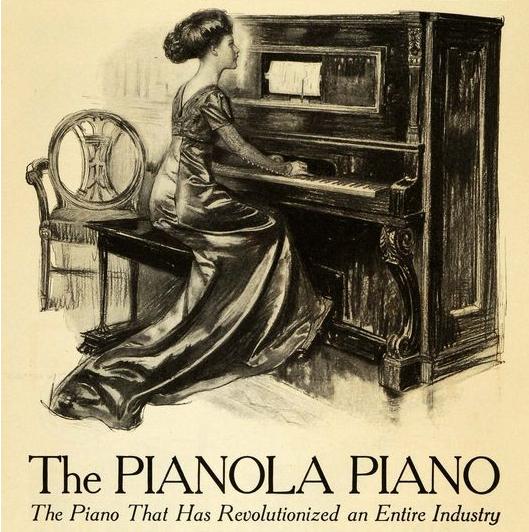
The lady illustrated above is interpreting rolls on the earlier style of 65-Note Pianola Piano instrument, where the control levers are behind the keyboard instead of in the keyslip at the front. It is awkward to control a pedal player in this fashion but with a drawing her "bent over back" can be eliminated with artistic license! Most instruments would have the controls ahead of the keys, which is handier for using the Metrostyle Pointer, and that was the manner in which the original push-up Pianola functioned. If I could talk to that lady who is interpreting a roll, say one "Metrostyled by Grieg", I'd ask her if it were an American or British roll. Grieg changes dramatically in these cases, but the composer's logotype always remained the same.
IN CONCLUSION, use the Metrostyle as a reference if you wish, or follow it precisely as you will, but put the pedigree away. This is NOT the composer connecting with you from beyond the grave. It is an artistically marked tempo line created in Aeolian factories here and abroad. Enjoy PAPILLON and the other Grieg Metrostyle rolls as you see fit.Do not bother with the Duo-Art ones since they are dreary and reflect none of the phrasing or dynamics on the pedal player rolls in the 65 and 88-Note formats.
With a little practice you can "read" the Metrostyle line without the Pointer, especially in the 88-Note format. Having an Aeolian player is not necessary at all. This lets you keep your eyes on the perforated music arrangement and eliminates a distracting pointer which can - as mentioned above - ruin a treasured music roll on rewind. The Metrostyle is best when used as a personal study feature and later with the Pointer folded down (as Aeolian suggested after the instrument sale). Be master of your Player-Piano whatever the make. Beware of those poseurs who say "This is exactly how Grieg (or Busoni or Paderewski) would play the music". Those are the same people who go into ecstasy with hand-played rolls of George Gershwin or Josef Hofmann - when, in reality, the catalogue rolls were the work of talented staff arrangers. W. Creary Woods made some of the best of the day in the names of artists for the Duo-Art Pianola.
The player should be an extension of yourself, a reflection of your own musical tastes, given the limits of a particular arrangement being played on the instrument. The Metrostyle can be a tool but when all is said and done YOU are the roll interpreter, the musician who brings a perforated arrangement to life. Ghosts of Grieg - or anyone else - aren't required.
ARTCRAFT Music Rolls
Wiscasset, Maine 04578
November 20, 2011

Now, open minded reader, what some individuals do not want you to know....
Definition of POORLY CONSTRUCTED Music Rolls
No repeating any of the arrangement 100% (since music must build to a climax or fade away at the end).
No staccato which isn't graduated.
No homogeneous notes, even on music which reprises the content; minute changes in the perforation length conveys the illusion of a keyboard pianist.
No automatic sustaining pedal which doesn't take into account the slower travel and design differences of the pneumatic feature to the artist's foot pedal.
No use of the hammer rail lift (soft pedal) until all the possibilities of the expression system have been explored; the soft pedal designs differ with pianos, especially with Aeolian "reproducing" players of the past.
No following the notation slavishly since the score is merely a 'springboard' for the keyboard pianist ... and the musician running a Leabarjan perforator.
No organlike connected notes for piano solos unless required for the score. The player is organ technology on a piano keyboard so the"slush factor" of that element must be circumvented by creative arranging for a percussion instrument like the Pianola.
No tied-triplet faking dotted-8th & 16th notes, the jazz or swing beat ... something some companies did "on the cheap" to eliminate labour in creating Master rolls. Thus, what should be at 6 punches per beat is 1 1/2 + 4 1/2 = 6 is on phony arrangements 4 + 2 = 6, musically unsatisfactory.
There are other 'rules' for ARTCRAFT arrangements but the ones listed above are paramount.
The hands-on method of Leabarjan arranging allows for a "test strip" on top of the Master roll - or the Master to be removed from the machine - and played on a REAL acoustic piano at any time. This allows for pencil marking while the roll is in progress and to check the texture of the arrangement as well as to match the paper travel speed to the musical effects desired. ARTCRAFT Rolls are performed for musical friends, on concerts and in many areas to check the listeners' reactions long before release. In some respects this is like Geo. Gershwin testing out his new music at parties, later tweaking it for stage purposes when needed. The "tried & tested" music roll is the preference and goal of our releases. Some ARTCRAFT titles have been in publication since the early '60s and plans exist to release a few from the '50s as well. A roll which has lasting musical appeal is what we strive to achieve.
ARTCRAFT Music Rolls
Wiscasset, ME 04578 USA
October 22, 2011
STILL UNDER CONSTRUCTION